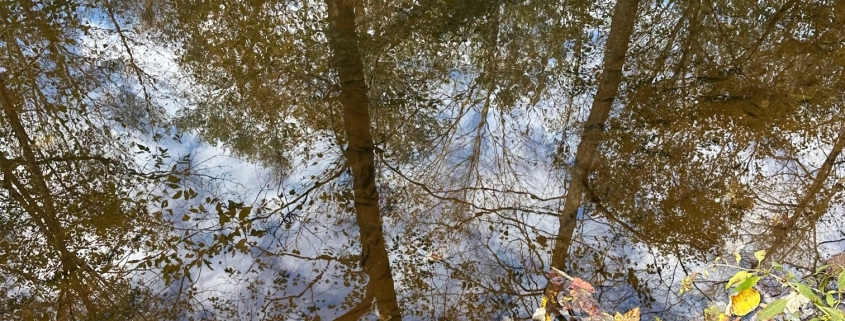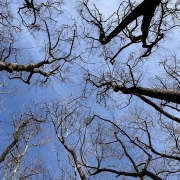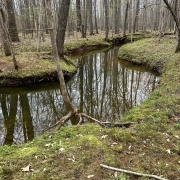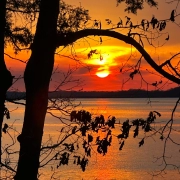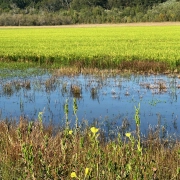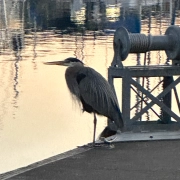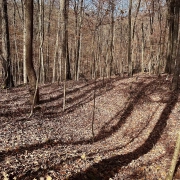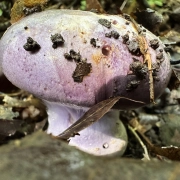Fall Semester Easy Steps to Better Nature Photography OLLI Course
On October 31, 2023, I participated in a roundtrip photographic walk on the Beaverdam Swamp Boardwalk Trail through the water tupelo forest on Alabama’s Wheeler National Wildlife Refuge. The swamp saunter was a field laboratory for the University of Alabama in Huntsville OLLI (Osher Lifelong Learning Institute) course on Easy Steps to Better Nature Photography taught by Philip Flowers, OLLI member, and retired professional photographer.
We left the trailhead parking area at 8:30 AM under partly sunny skies and an autumn-like 40 degrees, perfect conditions for exploring this sector of the Wheeler National Wildlife Refuge. We covered the one-mile round-trip saunter in 2.5 hours. Our intent was not to hurry. I have visited the swamp more than a dozen times since retiring to northern Alabama, sometimes alone, others with Judy and our grandkids, visiting friends and family, colleagues, and students in my OLLI or LearningQuest courses. In all four seasons. Once with the grandkids after dark. Each time, the swamp revealed new treats and different moods.
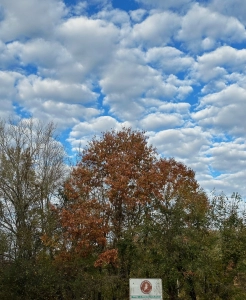
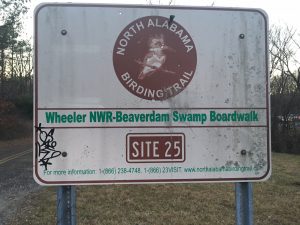
I teach Nature-related courses often at both OLLI and LearningQuest, the companion adult education program offered through the downtown Huntsville/Madison County Library. I was happily only a student with this course.
The OLLI Course
I found the course title, Steps to Better Nature Photography, compelling. I’ve developed my retirement hobby and avocation gradually. Nature photography is a big component. I publish 50-70 Great Blue Heron photo essays annually, themed around what I term Nature-Inspired Life and Living or The Nature of North Alabama (or wherever my travels lead me). I issue Facebook Posts (brief narrative and 3-7 photos) one to two times weekly, similarly themed. I recently published my fourth book, Dutton Land and Cattle, which includes 130 of my color photos. Because I seek excellence in my Nature photography, I could not resist registering for Phillip’s course. That’s him below left, snapping photos along the gravel entry trail that passes first through a mixed pine and hardwood upland, then into a hardwood riparian forest, and then into the water tupelo swamp.
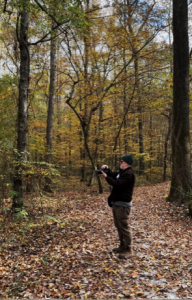
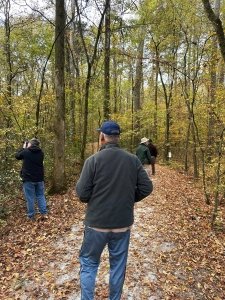
For several years I’ve suffered from camera envy. I have only my iPhone. Most of my fellow OLLI classmates carry big boy SLRs. I’ve struggled with whether I can meet my posting objectives with the iPhone, or take the next step, graduating to a real camera. My hope is to learn how to be even more effective with my iPhone. As I draft this narrative, I am making progress toward taking better Nature photos, not yet ready to advance to a digital SLR.
I recorded this 0:58 video along the gravel trail in the upland hardwood forest:
The boardwalk transits the tupelo swamp. I’ve seen water lapping at the boardwalk side rails during the reliably wetter winter and spring. We found the swamp bone dry for our Halloween outing. Since August 15, 2023, I measured 1.55 inches of rainfall, just 19 percent of the average rainfall for that period, eight inches. Averages are funny that way. Some past year and some future period will see one or two tropical systems slosh north from the Gulf, dumping copious rain that will counter this season’s drought. The average will not shift. This is not climate change. It’s weather varying within climate.
The main canopy tupelo leaves covered the boardwalk and forest floor. I’ve observed in prior years that, even during wet late summer years, tupelo sheds its leaves well in advance of upland forests.
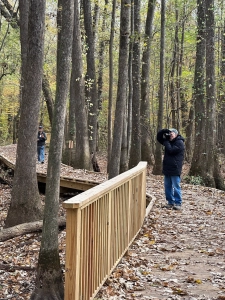
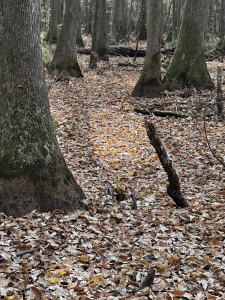
I recorded this 0:52 video from the boardwalk entrance, not yet deep within the swamp:
Each visit to the Beaverdam Swamp National Natural Monument opens a new window to her beauty, magic, wonder, awe, and inspiration!
The Forests
Yellow dominates the mid- and under-story of the mixed hardwood upland just beyond the trailhead (left). A single loblolly pine stands at the center. The image (right) looks vertically into the full, towering canopy of the riparian hardwood forest on approach to the tupelo swamp. I wanted my photos to demonstrate that I’m learning from the course. The sky fascinates me. Both images highlight the background, even as they demonstrate the autumn variety of colors, textures, and context.
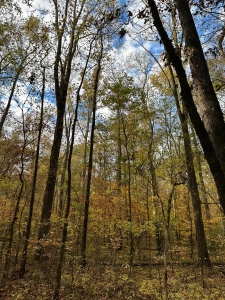
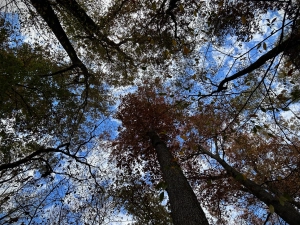
The combination of dense growing season shade under the tupelo and seasonally saturated and flooded soils eliminates ground cover and reduces the shrub layer. I recorded this 0:33 tupelo swamp video to depict the tupelo swamp:
I failed to completely capture the striking image I sought (left) of the rectangular golden sunlight display on the leafy forest floor. Perhaps I need a sequel course on Steps to Better Nature Photography?! I’ve published several prior Posts about the tupelo swamp, with its ancient (200-plus year old), hollowed, weathered giants. Even the high crowns are coarse and broken (right), providing aesthetic framing for the autumn sky.
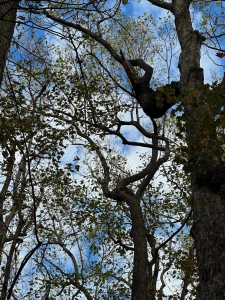
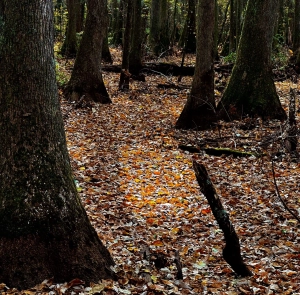
The tupelo swamp forest never disappoints. I will return once winter rains restore the watery magic.
Autumn’s Richness
I’ve seen hearts-a-bustin (strawberry bush) several times fruiting during the trailing end of the 2023 season. Along the trail running through the upland forest, this waning fruit cluster called out to me, “Here, try to capture my image among the crowded backdrop of understory plants, fading leaves, and the forest beyond.” I tried, but the outcome fell short of my expectations.
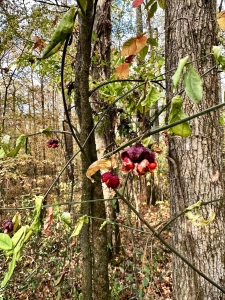
Both the paw paw and round-leaved greenbrier celebrated the seasonal transition by replacing their green matrix with yellow, while temporarily retaining green venation. Beauty lies in Nature’s subtleties!
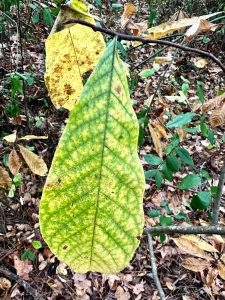
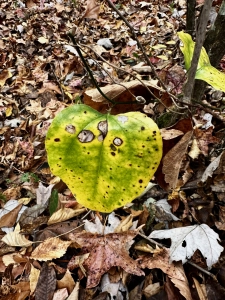
I suffered bouts of poison ivy agony dozens of times over my field-forestry professional days and from leisurely woods-rambles. I readily see its classic shiny green warning flags of spring and summer foliage. I don’t recall previously paying special attention to its fall woodland glory. I couldn’t resist its appeal on this day. I wonder how many school-age children annually add these special leaves to their autumn leaf collection!
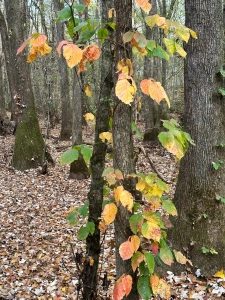
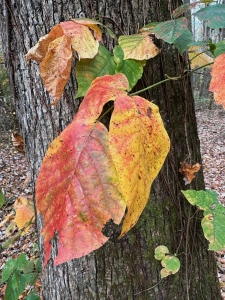
A closer view magnifies its magic!
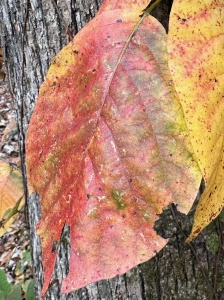
These Stereum mushrooms added a bit of their own color to the fall woodland portfolio. As I often do, I wonder how many visitors amble along the trail without noticing the visual treasures that lie hidden in plain sight, much less marvel at the role these decomposers play in the forest cycle of life.
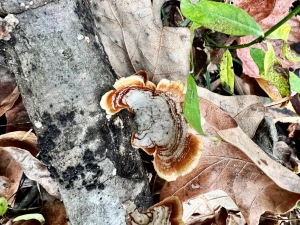
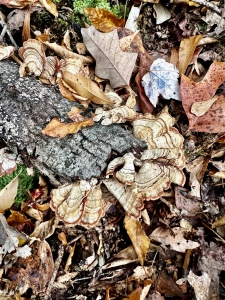
Soil isn’t the only growing medium in this magnificent ecosystem. Moss is quite content to thrive on moisture and nutrients available on the bark of a standing tree (left.) The moss, currently desiccated and dormant, has evolved to survive extended dry periods. Drought-ending rains will pump life back into these vertical moss-gardens. The poison ivy vine grew vertically with the tree at right. It relies on the tree for access to the full sunlight available in the upper canopy, even as it remains rooted in the forest soil, where it secures nutrients and moisture. These are complex ecosystems consisting of diverse organisms living interdependently.
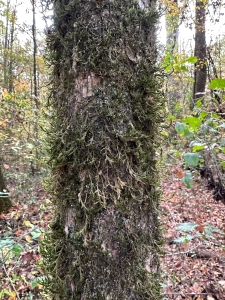
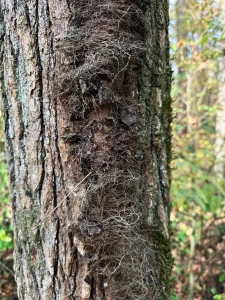
Since my freshman year of forestry school, I have been a student of trees. Many years in the forests of the eastern USA have sharpened my familiarity with common species. I recognize dozens by their leaves, twigs, buds, fruit, form, site preferences, and bark. One of my favorite tree bark color and patterns is American persimmon: nearly black, blocky, and deeply furrowed. A yellow-bellied sapsucker had emblazoned this individual with its own distinctive pattern of bird peck. The bird typically insect-forages in horizontal rows (right). Another face of the tree exhibited a more complex combination of vertical and horizontal striping. Were I to retake the two photos I would snap closer views.
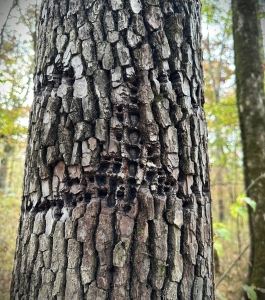
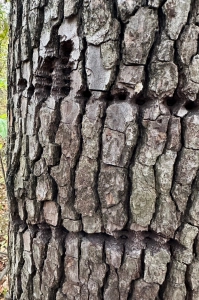
A nearby red maple twin (live tree left and standing dead twin right) offered critter housing excavated by pileated woodpeckers seeking grubs and other insects feasting on the dead wood. A vine (poison ivy?) found reason to penetrate the lower center cavity. I’m sure the vine found no exit. As with my post mortem on the persimmon photos, I should have taken a closer view of the cavity appearing to slurp a strand of viny spaghetti!
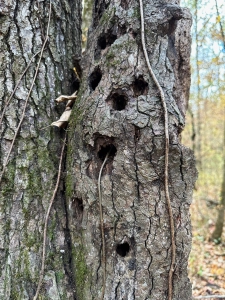
I am always on alert for tree form oddities and curiosities. I spotted this convoluted gnarly burl off-trail on a forked red oak. In retrospect, I should have acquired a closer view. However, today (11/7/23) I attended the final Class session. The instructor reviewed ways to improve Nature photographs by editing at home. I believe that I created a better result at right from the original image at left. In fact, I am convinced that the combination better suits the purpose of my Great Blue Heron Post. The modified image allows me to show its details, view its subtle colors, and visually reach into its texture and folds.
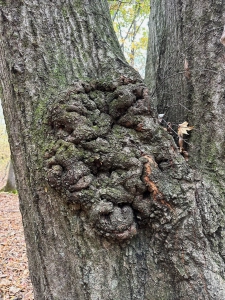
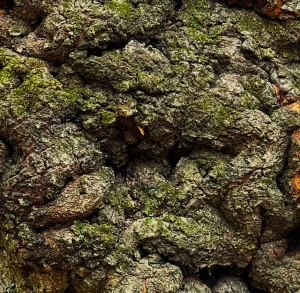
The Beaverdam Creek Boardwalk Terminus
I rethis corded 0:53 non-narrated video at the trail terminus, where the creek continues to carry a respectable flow despite the extended drought.
The placid flow splendidly reflected the cloud-spangled sky and creekside forest.
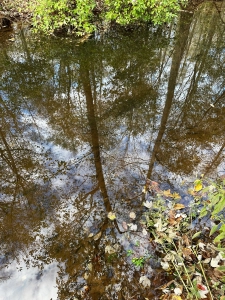
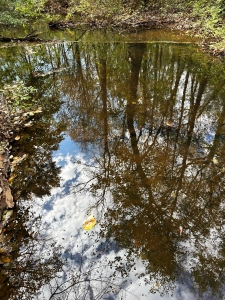
Speaking from the perspective of an old forester (BS 50 years ago!), now two years into his eighth decade of Nature-Inspired Life and Living, I evidence that it’s never too late to teach an old dog new tricks. I am eager to employ what I’ve learned in this four-week Easy Steps to Better Nature Photography course.
Thoughts and Reflections
I offer these observations:
- Nature’s magic lies hidden in plain sight!
- Understanding Nature’s ways sharpens our eyes and focuses the camera’s lens.
- Each visit to the Beaverdam Swamp National Natural Monument opens a new window to her beauty, magic, wonder, awe, and inspiration!
Inhale and absorb Nature’s elixir. May Nature Inspire, Inform, and Reward you!
Note: All blog post images created & photographed by Stephen B. Jones unless otherwise noted. Please circulate images with photo credit: “©2023 Steve Jones, Great Blue Heron LLC. All Rights Reserved.”
Another Note: If you came to this post via a Facebook posting or by an another route, please sign up now (no cost… no obligation) to receive my Blog Post email alerts: http://eepurl.com/cKLJdL
And a Third: I am available for Nature-Inspired Speaking, Writing, and Consulting — contact me at steve.jones.0524@gmail.com
Reminder of my Personal and Professional Purpose, Passion, and Cause
If only more of us viewed our precious environment through the filters I employ. If only my mission and vision could be multiplied untold orders of magnitude:
Mission: Employ writing and speaking to educate, inspire, and enable readers and listeners to understand, appreciate, and enjoy Nature… and accept and practice Earth Stewardship.
Vision:
- People of all ages will pay greater attention to and engage more regularly with Nature… and will accept and practice informed and responsible Earth Stewardship.
- They will see their relationship to our natural world with new eyes… and will understand more clearly their Earth home.
Tagline/Motto: Steve (Great Blue Heron) encourages and seeks a better tomorrow through Nature-Inspired Living!
Steve’s Three Books
I wrote my books Nature Based Leadership (2016), Nature-Inspired Learning and Leading (2017), and Weaned Seals and Snowy Summits: Stories of Passion for Place and Everyday Nature (2019; co-authored with Dr. Jennifer Wilhoit) to encourage all citizens to recognize and appreciate that every lesson for living, learning, serving, and leading is either written indelibly in or is powerfully inspired by Nature.
I began writing books and Posts for several reasons:
- I love hiking and exploring in Nature
- I see images I want to (and do) capture with my trusty iPhone camera
- I enjoy explaining those images — an educator at heart
- I don’t play golf!
- I actually do love writing — it’s the hobby I never needed when my career consumed me
- Judy suggested my writing is in large measure my legacy to our two kids, our five grandkids, and all the unborn generations beyond
- And finally, perhaps my books and Blogs could reach beyond family and touch a few other lives… sow some seeds for the future
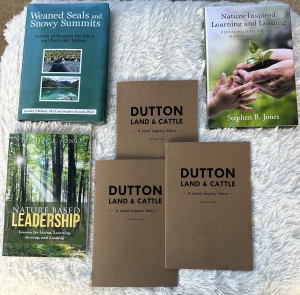

All three of my books (Nature Based Leadership; Nature-Inspired Learning and Leading; Weaned Seals and Snowy Summits) present compilations of personal experiences expressing my (and co-author Dr. Wilhoit for Weaned Seals and Snowy Summits) deep passion for Nature. All three books offer observations and reflections on my relationship to the natural world… and the broader implications for society. Order any and all from your local indie bookstore, or find them on IndieBound or other online sources such as Amazon and LifeRich.
I now have a fourth book, published by Dutton Land and Cattle Company, Dutton Land & Cattle: A Land Legacy Story. Available for purchase directly from me. Watch for details in a future Post.

